
Burano, one of the small islands in the Venetian Lagoon, has a world of color festooned on homes and shops.

The early morning, crisp winter’s light and still waters of the canal reflect the vivid colors of Burano homes.

Patches of green, a spot for a garden or a play area for children, are few and far between on Burano.
Sure, the City of Venice gets all the glowing attention, fawning press, crush of tourists, and irksome cruise ship traffic. It’s understandable – who wouldn’t want a romantic ride in a gondola, or a selfie that includes a background of the Rialto Bridge, or St. Mark’s Square? But if you leave Venice and take a short water bus ride you’ll arrive at the tiny island of Burano. There you will find brightly colored buildings, narrow canals, and a rich history of lace-making.
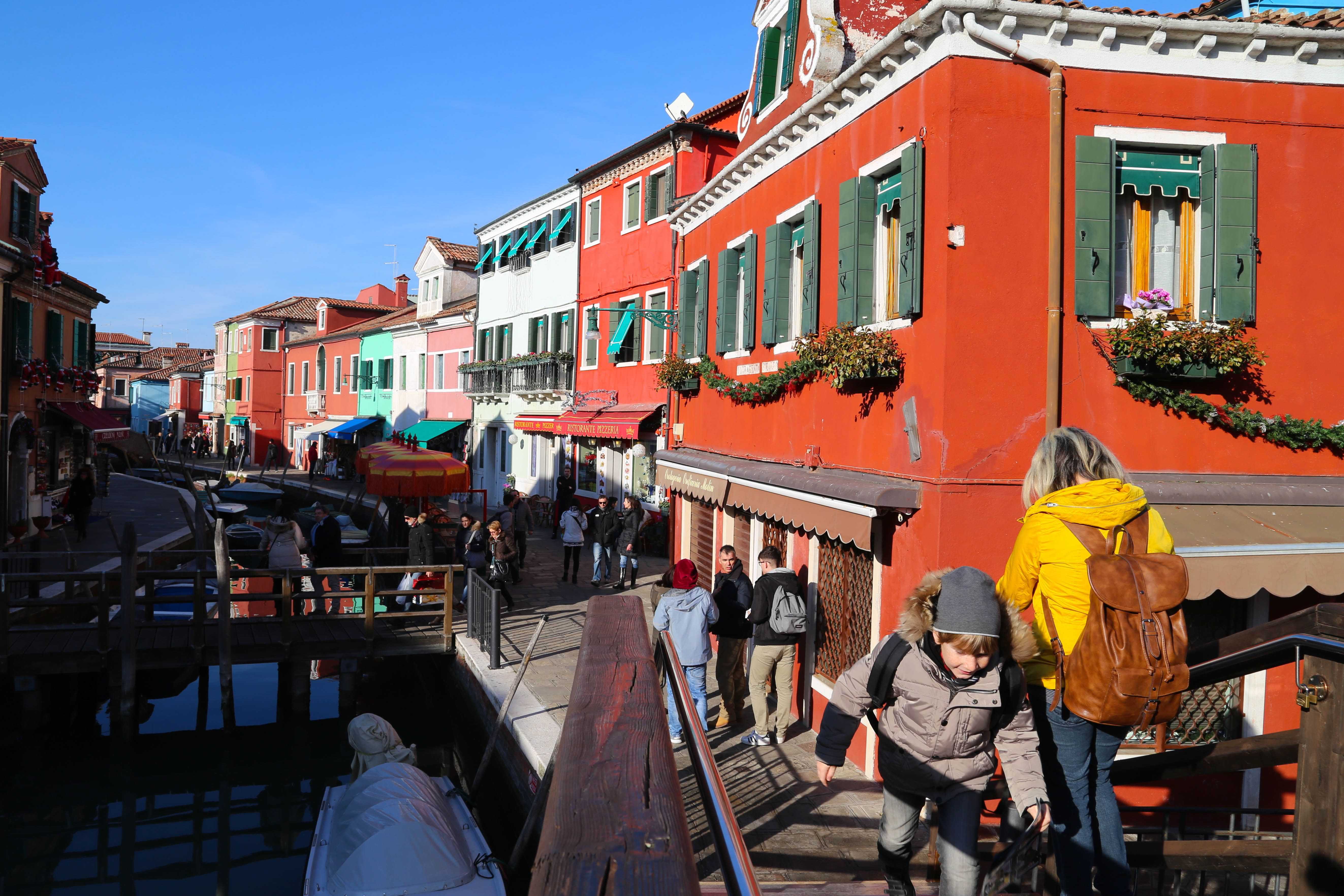
A young boy, right, ducks past a woman, oblivious to the riot of colors used to decorate the buildings of the island.

Homeowners must get approval from the island’s governing council to paint their home a particular color.

A trio of lads ignore the fine lace as they hurry past the shops in the main square of the island.
It’s a delightful day trip option. Burano is a very small place, just over eight-tenths of a square mile, and has a population of less than 2,800 residents. While the true reason for Burano’s renown for lacemaking has been lost to history, there may be a common thread between the fishermen of Burano and the island’s lace making.

It is clear that the people who live on Burano take pride in the distinctive nature of their island and work hard to make it a place they are proud to call home.
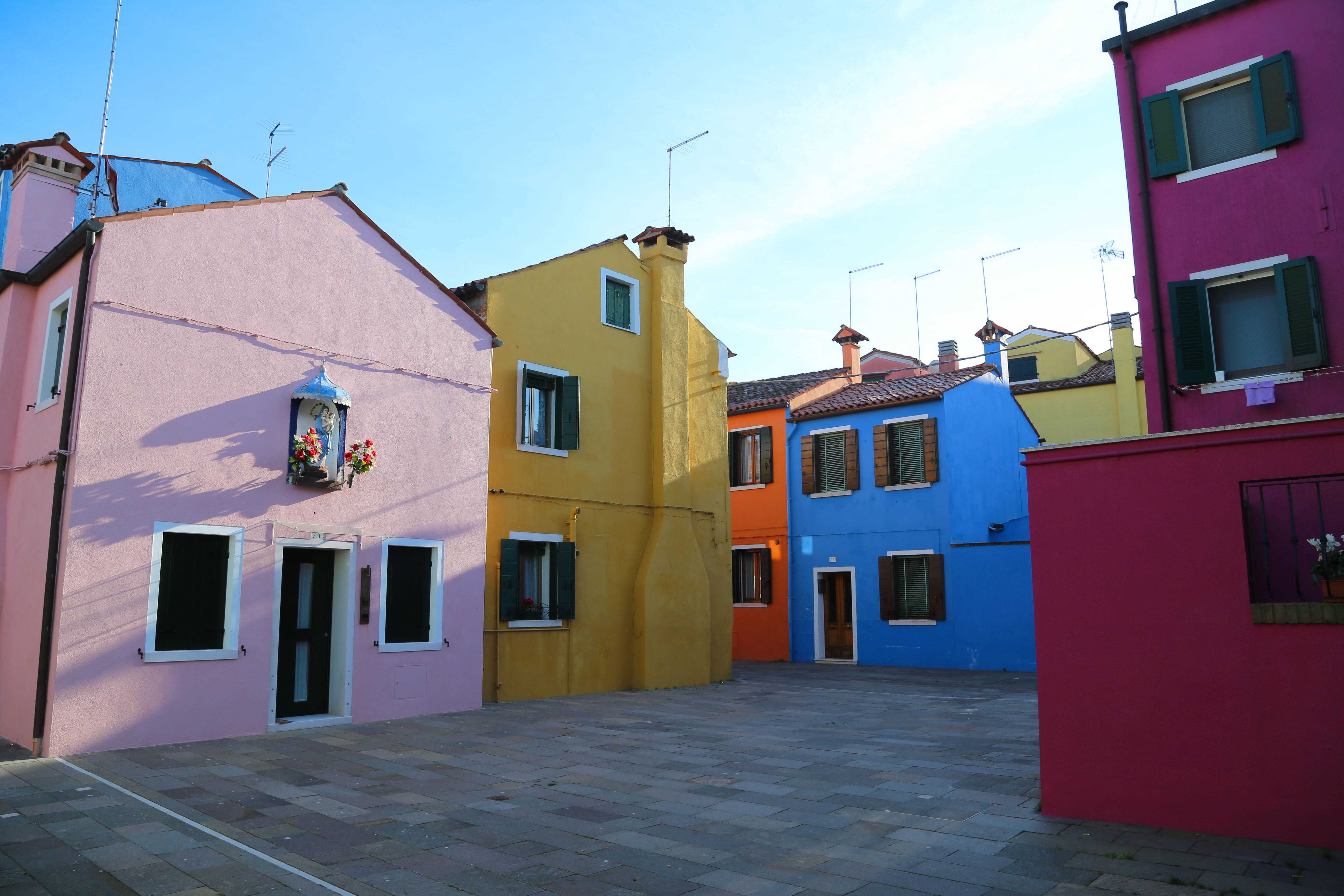
Is it Cubist Art? Pop Art? No, it’s the vivid color palette of the homes on Burano, each color carefully chosen — and approved by a governing board.
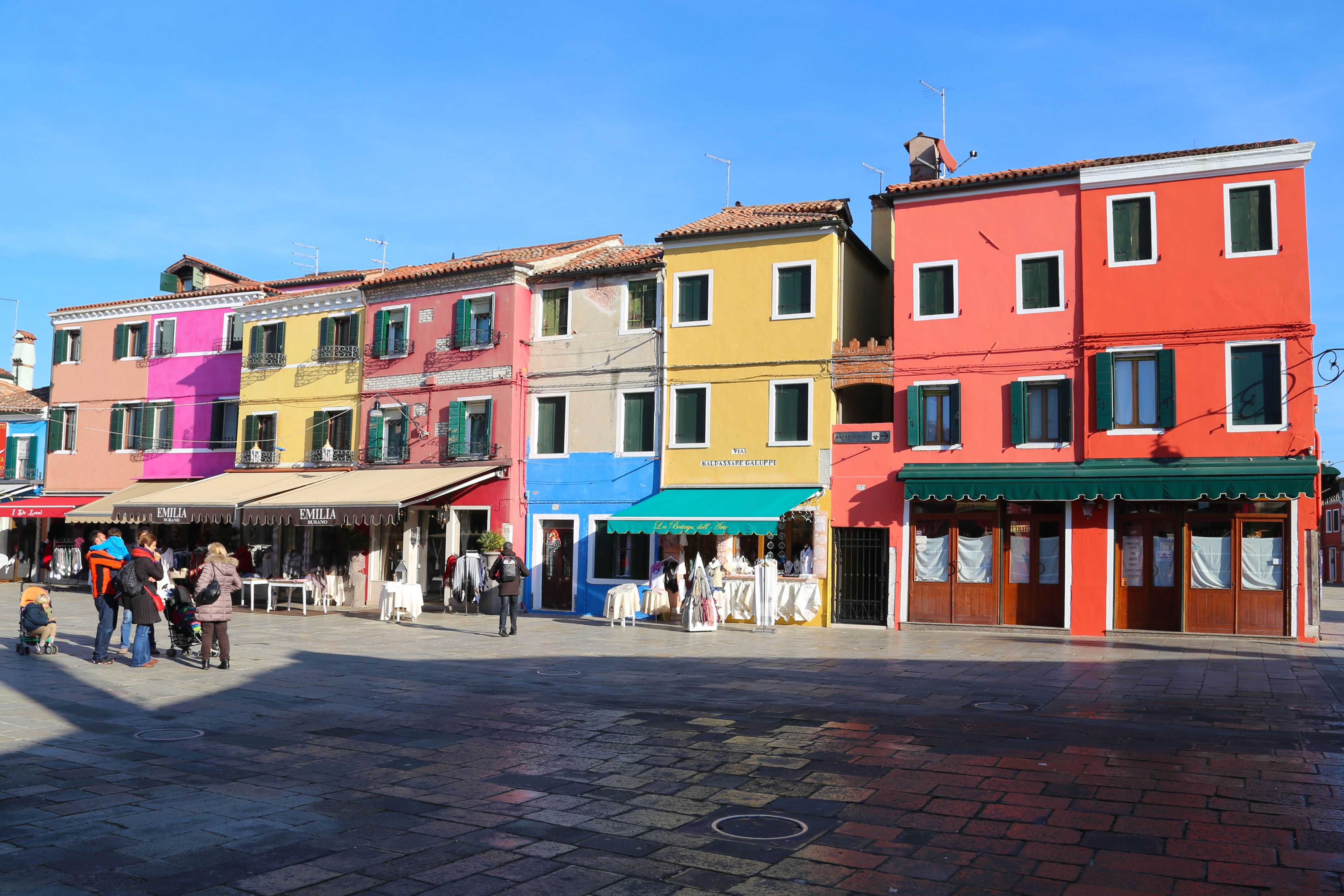
Everywhere you look when you visit Burano, you see color, like this row of lace shops on the square.
Burano has long been home to fishermen who make a living harvesting the water’s bounty. One theory connecting fishermen and lace is that a seaman, smitten by a pretty girl, gifted her an aquatic plant that resembled lace. She in turn created a piece out of needle and thread to memorialize her affections for him. Another story suggests that an extremely poor fishing season early in the 17th Century prompted women on the island to turn to lace making as a way to make ends meet. Both tales are fanciful and either one might be true – or not.
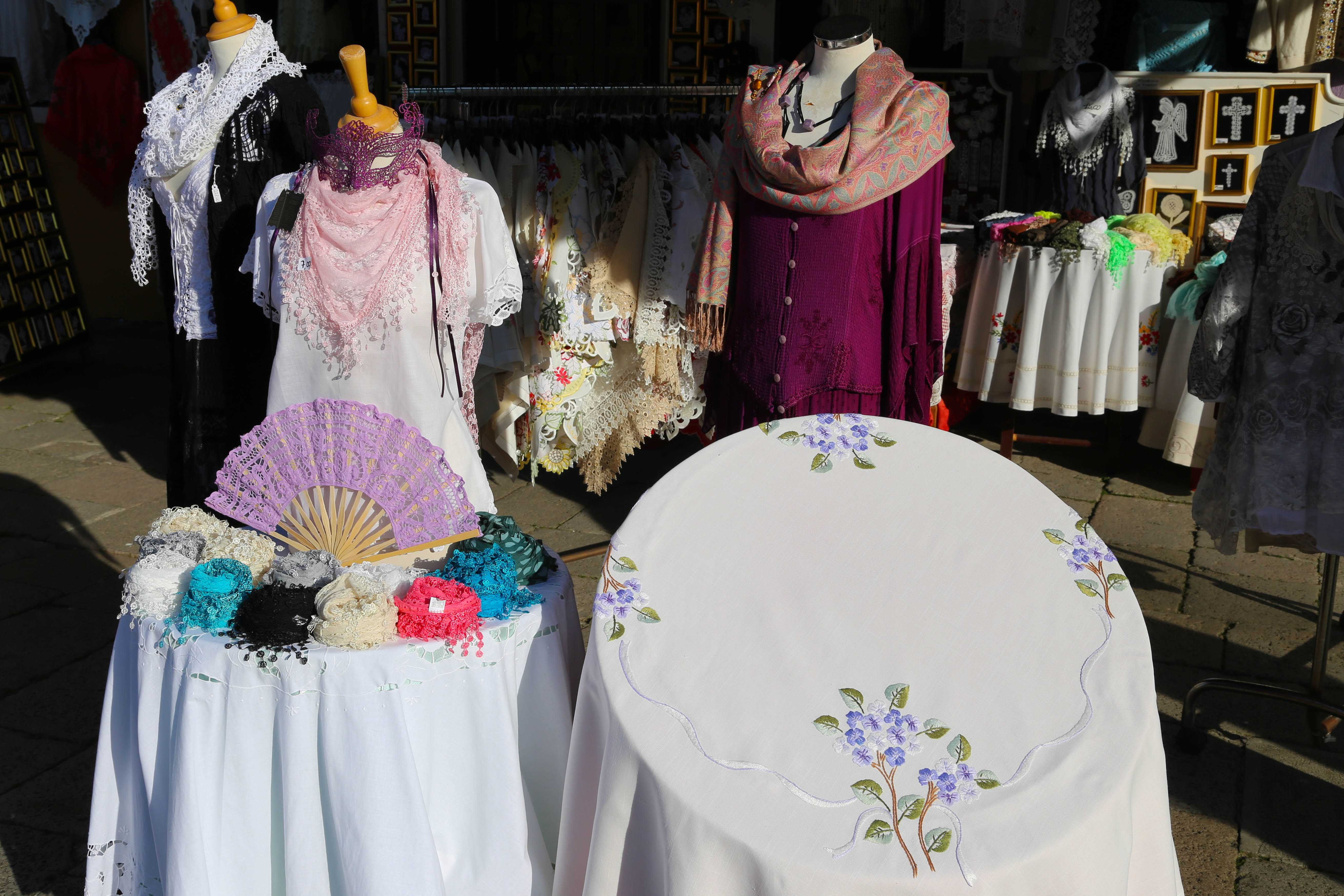
Burano has long been known as a place where buyers could fine high-quality, hand-made lace products.

This woman pays close attention to the work at hand, carefully placing each stitch in a precise location.

The lace maker uses a pattern as a guide to create intricately detailed clothing, linens, and finery.

To make a piece as intricate as this requires patience and a high degree of skill.
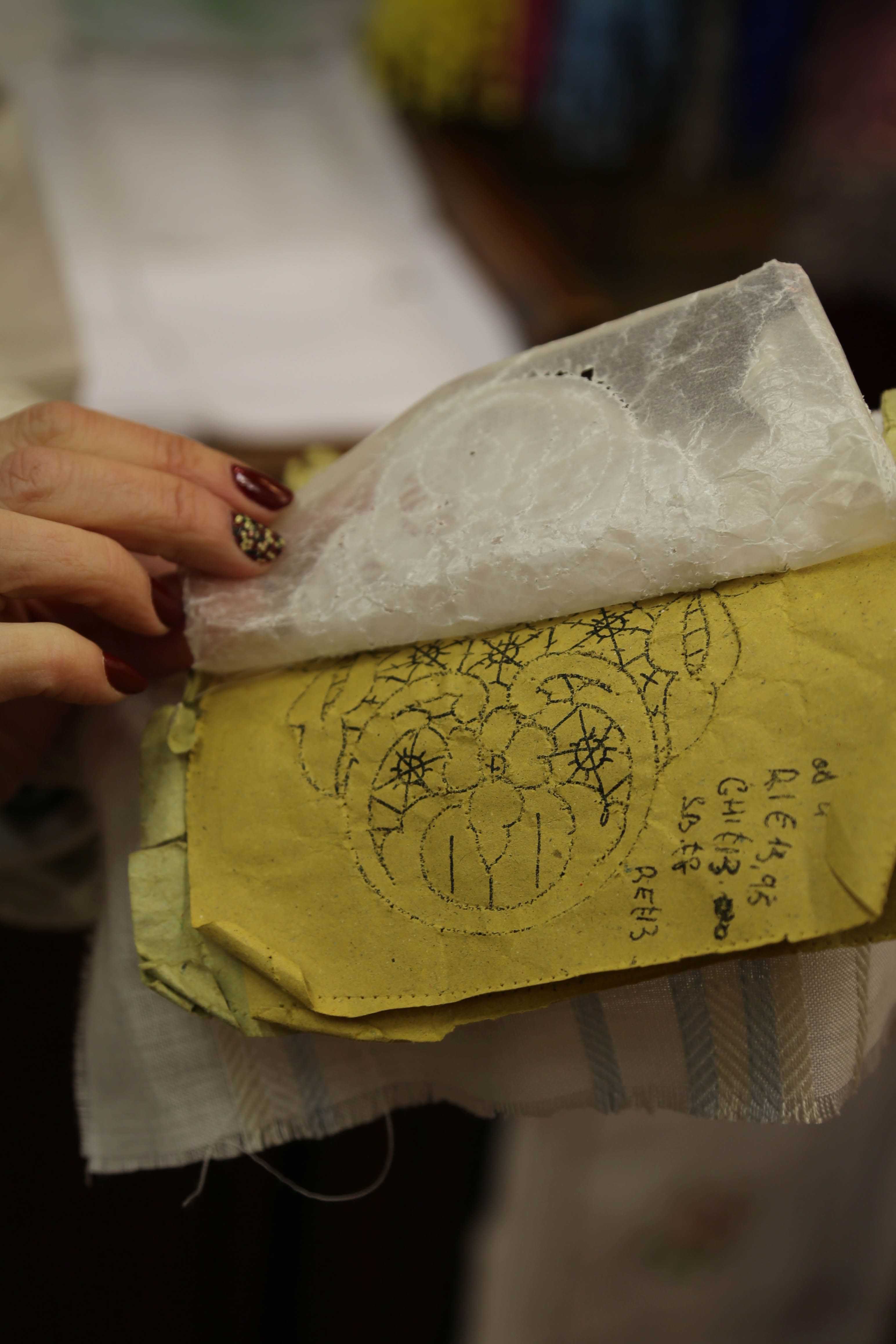
The lace makers on Burano follow a pattern to create their intricate pieces. In many parts of the world lace is manufactured using machines, reducing the time and cost needed to produce it. Burano is still a hands-on center of lace making.
What is known is that lace making caught on in Burano and thrived from about 1620 until the first decade of the 18th Century. During the 18th Century lace makers in other countries began to thrive, but eventually the desire to have clothing, linens and other products made with lace began to wane in popularity. The development of machine-made lace in the 19th Century drove down the cost and time required to create lace products. Handmade lace is extremely labor intensive, time consuming and expensive luxury item, and it has become a fashion style that has fallen out of favor.

Only a true artisan can create — by hand — lace flowers that seem as lifelike and beautiful as these.
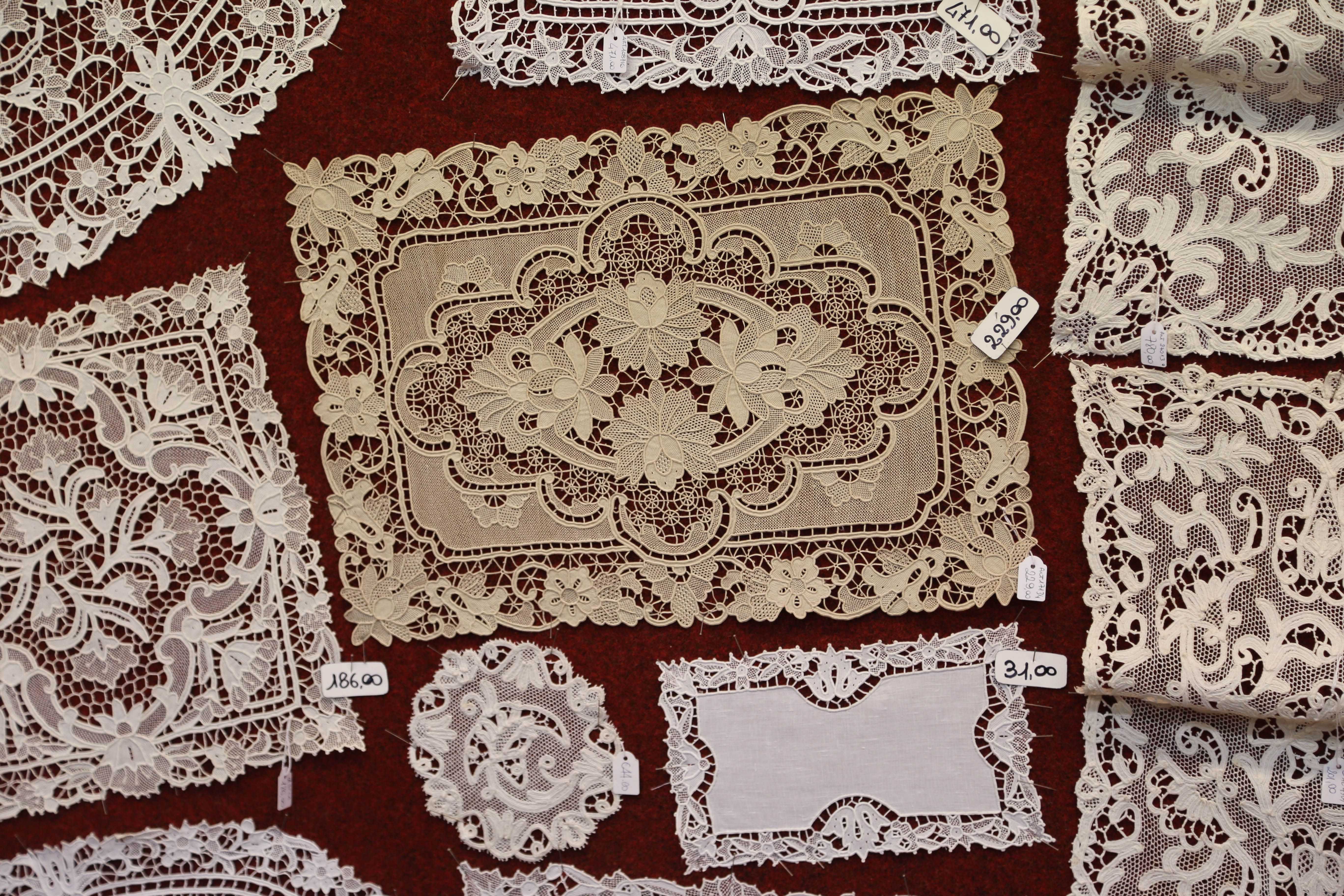
This photo and the one that follows make clear an important element when it comes to lace making. It’s the amount of lace created that determines the price. These pieces are made almost entirely of lace, which commands a high price.

But these handkerchiefs only have lace around the edges, meaning the lace maker had a bit less stitching to do.
But lace makers still ply their trade at some shops on Burano and there is also a lace museum that showcases some excellent examples of hand-crafted pieces. Shopkeepers are happy to show their wares, and if asked politely, the women who make lace will permit photos. But in reality, the practice is diminishing because the majority of the lace makers on Burano are older women and younger women don’t seem as interested in carrying on the tradition.
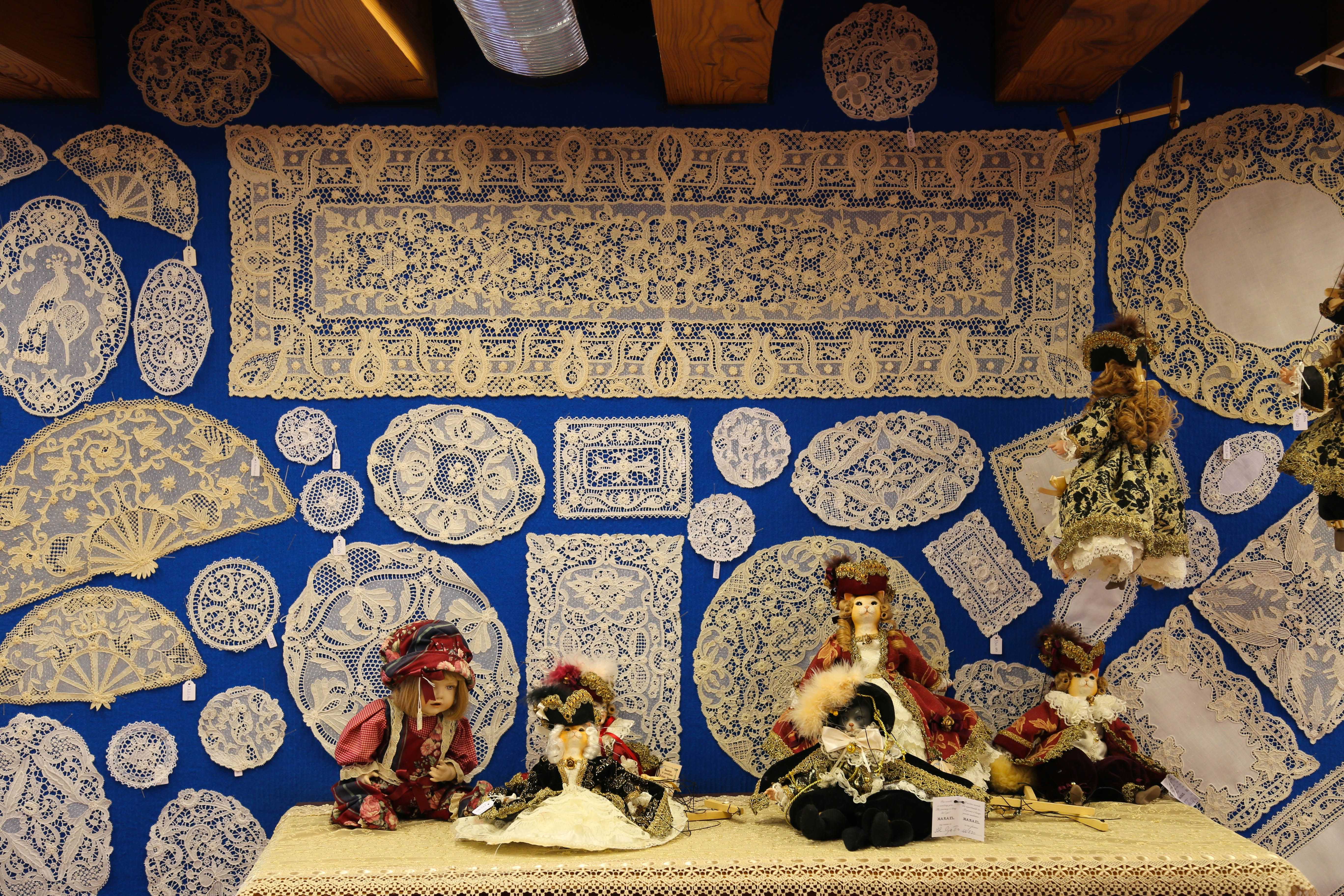
There is no telling how many hours were required to produce so much finery — all made by hand, and produced by highly skilled and dedicated lace makers who take great pride in their work.

Most lace is white, but some pieces are created using beautiful colors.
One Burano tradition that remains popular is the brightly painted houses that line the streets. Tradition has it that fisherman would paint the exterior of their home a bright color so they could find them more easily on foggy mornings after a long night on the water. The practice continues, and home owners must submit their color choices to an administrative council to gain approval. Burano, like other islands within the cluster of islands in the Venice Lagoon, is recognized as a UNESCO World Heritage Site.
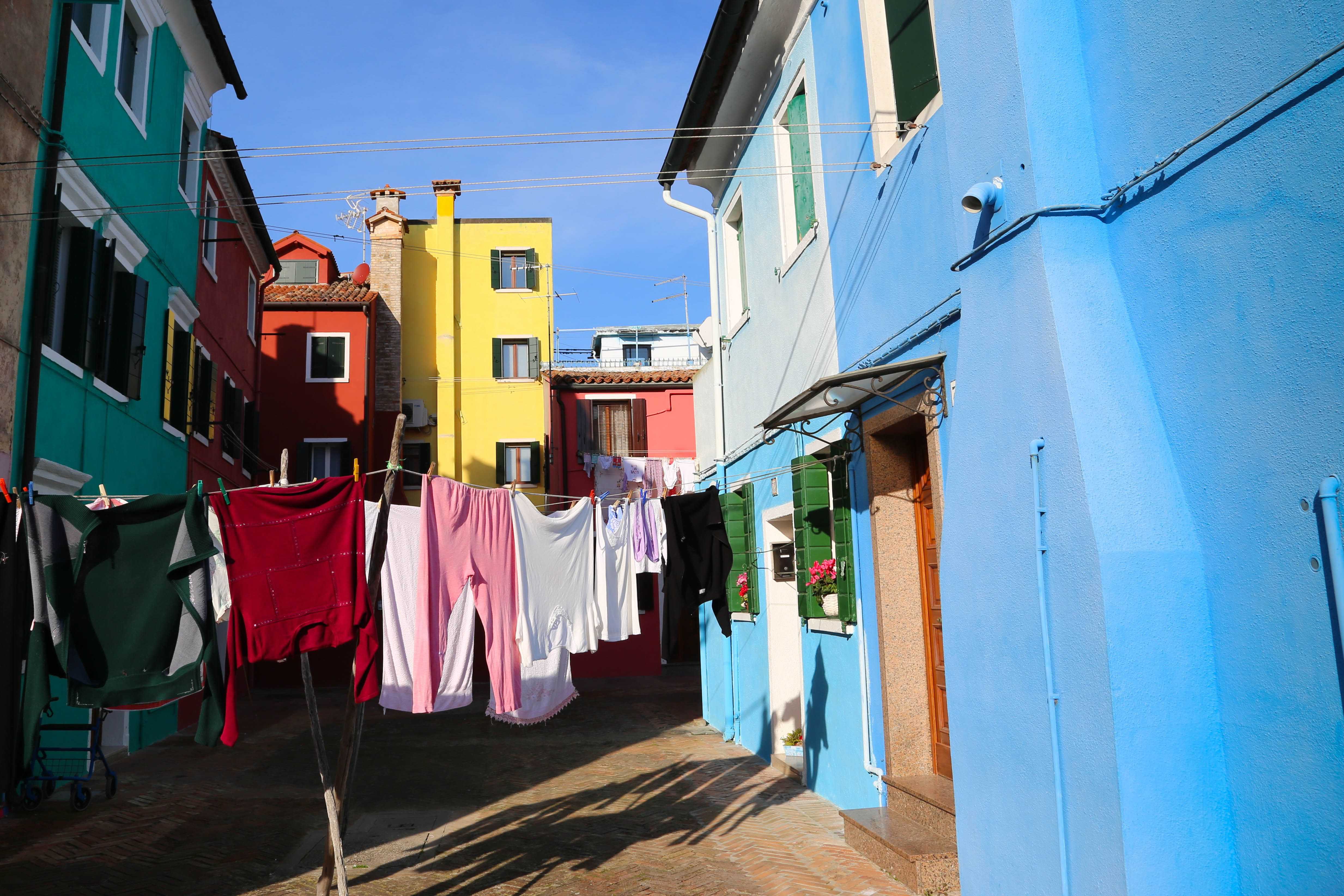
Looking at the laundry drying on the line makes one wonder if the homeowner simply takes in a shirt to the governing council and says, “I want to paint my house this color.”

A small piazza, like every street on Burano, is rimmed by colorful houses, giving the town a personality all its own.
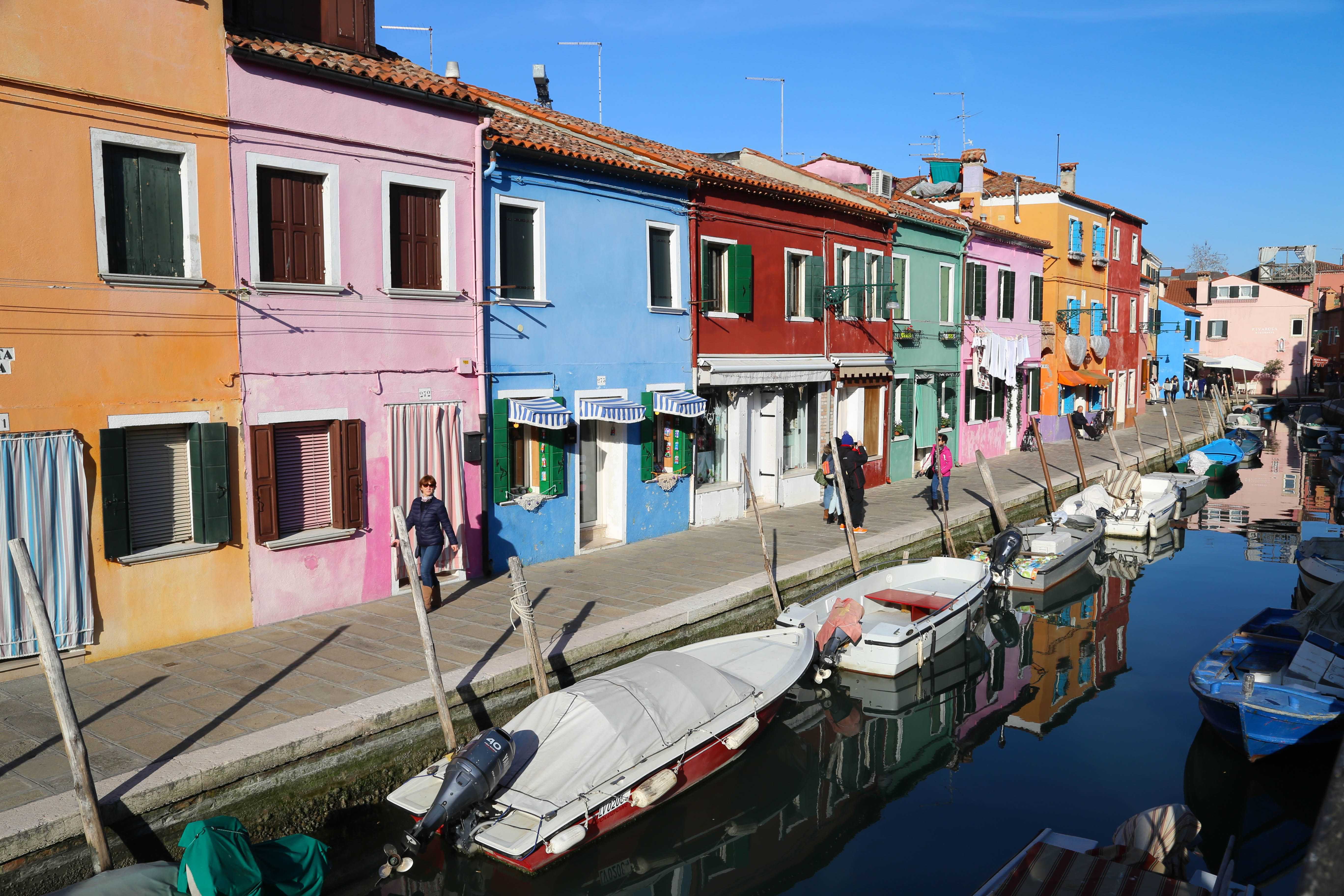
The woman, left, walks smartly past a row of colorful homes as she makes her way along one of the sidewalks of Burano.
Visitors can get to and from Burano from Venice by taking a water bus, or if they prefer, a more expensive water taxi. But regardless of how you get there, Burano offers a festive display of bright colors and a chance to appreciate the Old World craft of fine lace making. Enjoy a meal of fresh fish, sit at a café and linger over a cup of espresso, savor a delicious glass of wine, or stoll through the warren of picturesque streets and take in the ambience that is Burano.
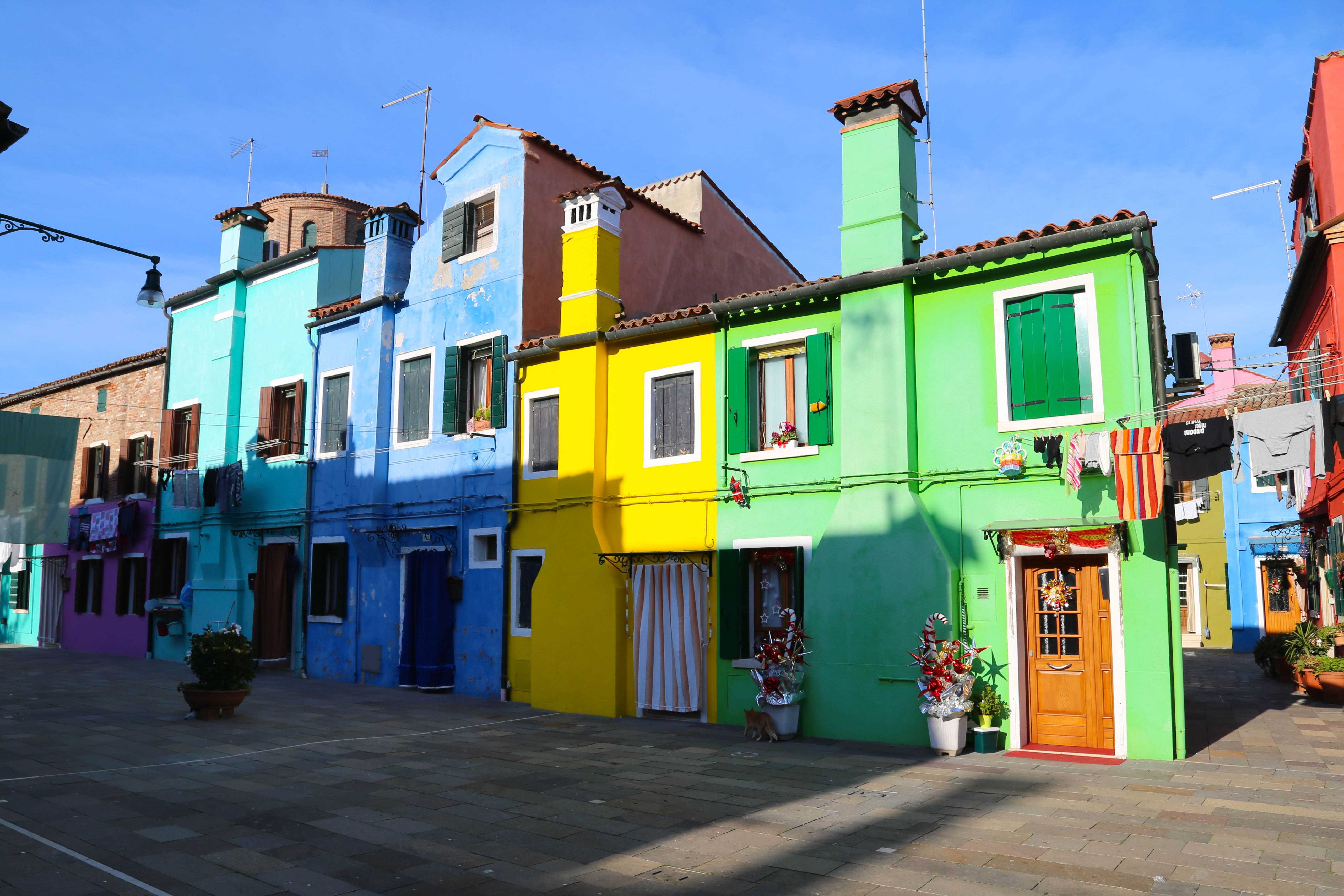
If yours was the only house in the neighborhood so brightly painted, the neighbors might be upset. But in Burano, everyone’s got the same idea.
For more information about Burano, click over to these websites:
